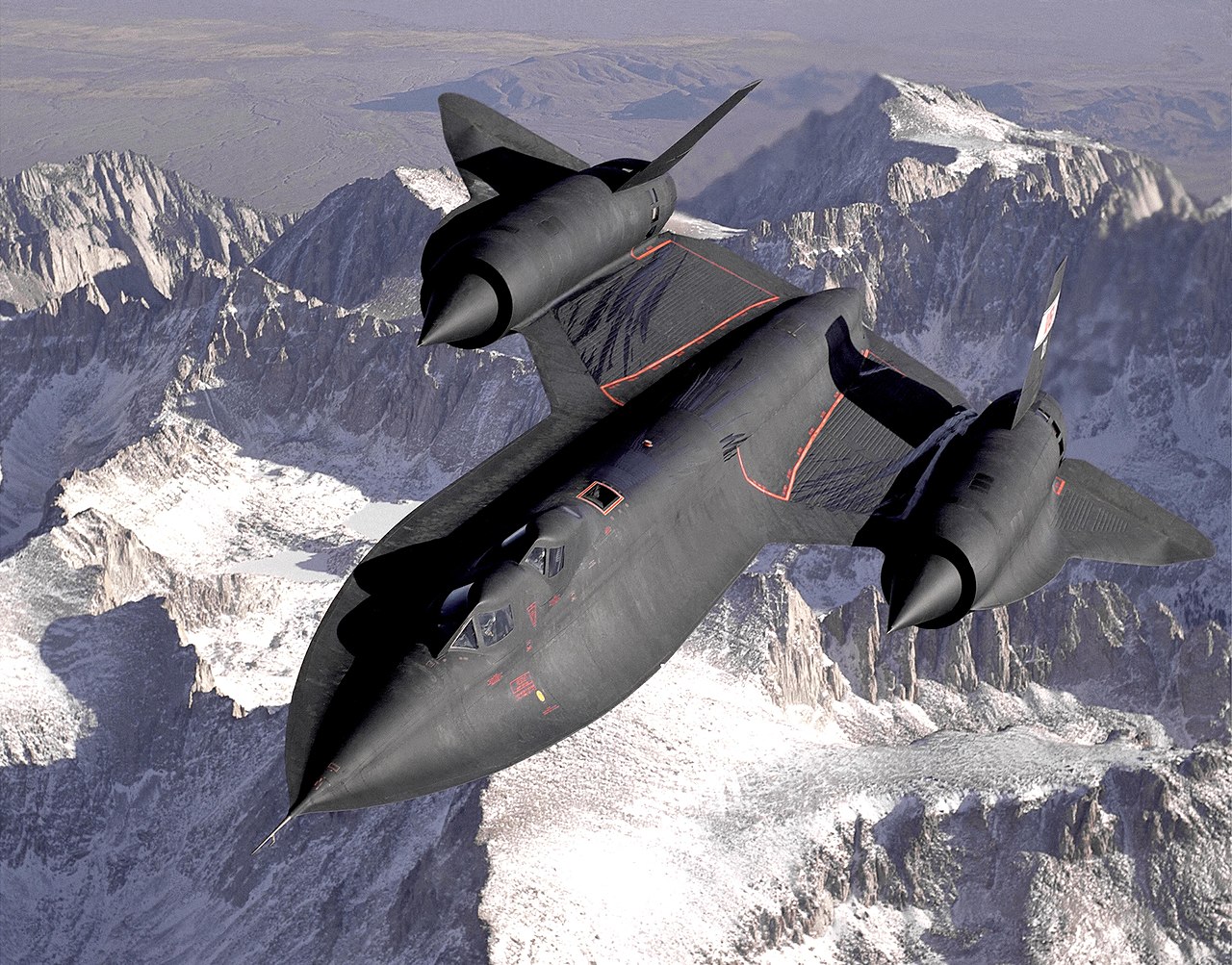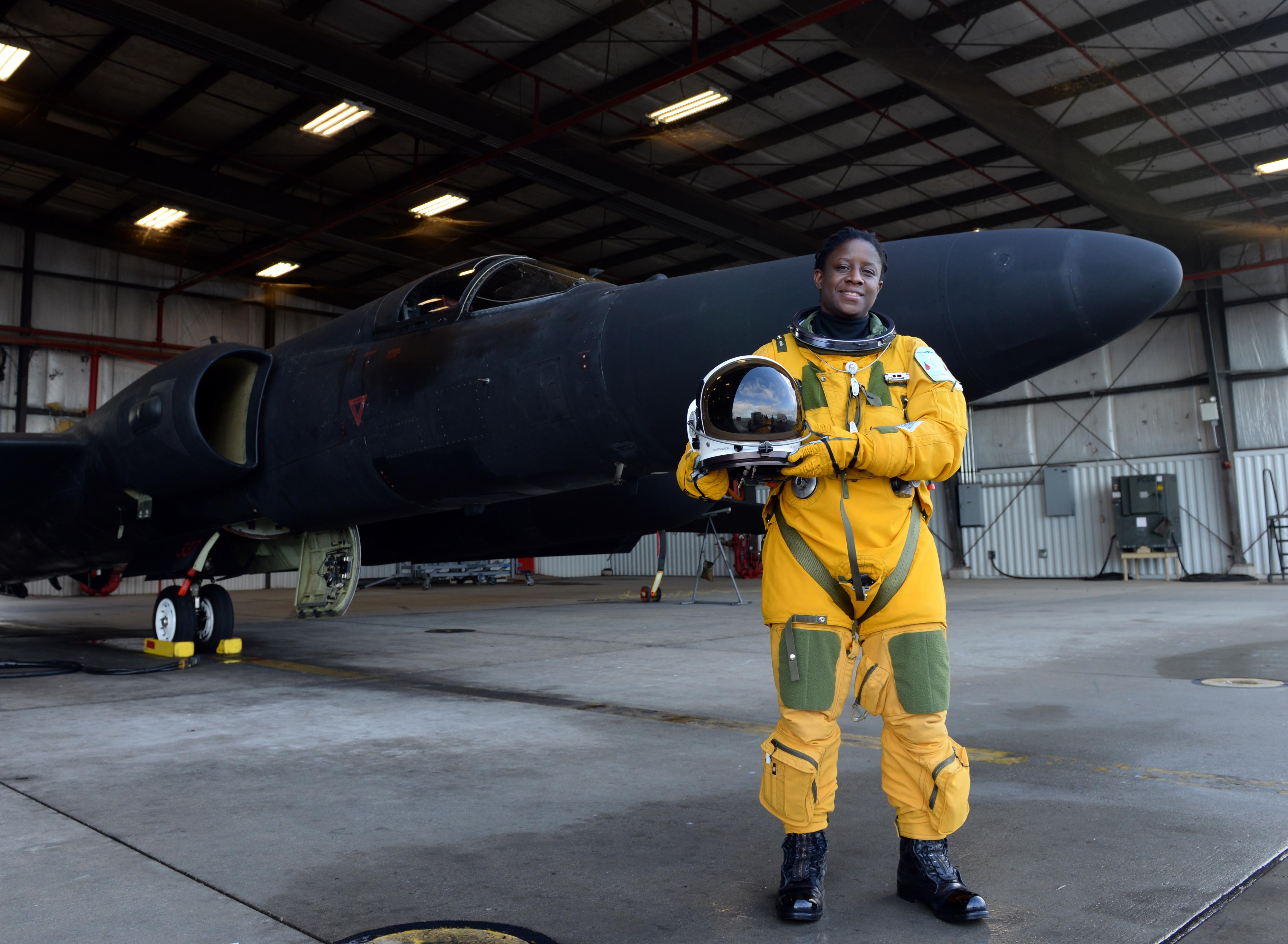Reconnaissance aircraft through the Cold War
Military
24 January 2021

A U-2 Landing at Beale AFB, CA. Photo by Airman 1st Class Luis A. Ruiz-Vasquez; USAF Photo; Public Domain.
During the Cold War, improvements in aviation technology were important in ensuring that each side could effectively fight, should a conflict arise. Thus, a fierce aviation and nuclear arms race ensued between the US and Soviets, as a part of the general deterrence strategy of the era. Stealth aircraft became important for the first time, as both the Soviets and Americans needed to conduct reconnaissance, but conventional aircraft are easily detectable and shot down. Though the first stealth-centered aircraft (the F-117) didn't come along until the 1980s, earlier Cold War technologies represent the first attempts to delay or avoid enemy detection.
The first high-altitude reconnaissance aircraft created by the air force was the Lockheed U-2 "Dragon Lady". The U-2 was designed as a high-and-fast spy plane, and its purpose was to take aerial photos. The U-2 was able to conduct a number of successful missions, especially ones that flew well into Soviet airspace. However, on May 1, 1960, a U-2 was shot down and the pilot, Francis Gary Powers, was captured. This was a key event during the war, as previous attempts at diffusing tensions proved to be a failure. The US government had designed the aircraft to self-destruct upon such an occurrence, and the pilot was supposed to commit suicide. As such, the US claimed that the aircraft was a weather research aircraft that had gone astray and crashed.
Unfortunately, the Soviets knew otherwise, as the wreckage was quite intact, the pilot was alive, and the Soviets had pictures of the surveillance technology onboard. However, Khrushchev avoided directly finger-pointing at Eisenhower, instead blaming the Pentagon. Eisenhower had the option to blame the incident on the Pentagon, but he took personal responsibility. This was done in fear of making it seem like he had lost control over his own government, which would have numerous international and domestic repercussions.
Following the incident, U-2s were stopped from flying such missions over Soviet airspace. However, U-2s were still flying elsewhere. Notably, a U-2 was shot down during the Cuban Missile Crisis by a surface-to-air missile (SAM), on October 27, 1962. The CIA had pilots flying reconnaissance missions over Cuba to assess the state of their missile technology. When the aircraft was shot down, it was one of the most tense moments of the crisis.
At the time, President Kennedy was confused, as he did not think Khrushchev had authorized the shooting. Until this point, it seemed that Khrushchev wanted a diplomatic solution, but to Kennedy, this was an escalation in the conflict. The Americans planned to retaliate with an airstrike in three days, knowing full well that doing so could cause an all-out nuclear war. Thankfully, we know that didn't happen, and they were able to deescalate the situation.

A SR-71 flying over the Sierra Nevada Mountains in California. Photo by Judson Brohmer; USAF Photo; Public Domain.
It was the incident with the U-2 over the Soviet Union, however, that displayed the need for a more effective piece of technology that could better evade Soviet defenses. This led to the creation of the A-12 program, which tried to create a better spy plane that could fly higher and faster. It offered numerous technological advances, such as titanium skin and an absorbent paint that could decrease its radar footprint. It was such a great aircraft that Elon Musk included it as part of his child's name. The A-12 was redesigned as the SR-71, which offered a second seat and extra fuel capacity. The SR-71 currently holds the aircraft speed record at 2,193 miles per hour.
Because the U-2 does not have landing gears under its wings, it requires the use of "Pogos" on the ground to help it maintain lateral stability. The high aspect ratio wings can make landing quite challenging.

U-2 pilots wear a special flight suit, not unlike a spacesuit, that provides pressure to the body in the event of a sudden depressurization at altitude.
Pictured: Lt. Col. Merryl Tengesdal, the only Black woman U-2 pilot in history. Photo by Sr. Airman Bobby Cummings; USAF Photo; Public Domain.
— Elon Musk (@elonmusk) May 5, 2020
Part of Elon Musk's youngest child's name was inspired by the Lockheed A-12.
References
- "A-12 Flight Manual With Technical Data Change". United States Air Force, 1968.
- "A-12 vs. SR-71 Blackbird Comparison". Roadrunners Internationale, 2019. https://roadrunnersinternationale.com/a-12s.html
- "Creating the Blackbird". Lockheed Martin. https://www.lockheedmartin.com/en-us/news/features/history/blackbird.html
- Geelhoed, E. Bruce. "Dwight D. Eisenhower, the Spy Plane, and the Summit: A Quarter-Century Retrospective." Presidential Studies Quarterly 17, no. 1 (1987): 95-106. http://www.jstor.org/stable/27550396.
- Gibbs, Yvonne. "NASA Armstrong Fact Sheet: SR-71 Blackbird". National Aeronautics and Space Administration, 2017. https://www.nasa.gov/centers/armstrong/news/FactSheets/FS-030-DFRC.html
- Guy, Jack. "Elon Musk and Grimes reveal how to pronounce baby's name -- but they disagree". CNN, 2020. https://www.cnn.com/2020/05/08/entertainment/elon-musk-grimes-baby-name-pronunciation-scli-intl/index.html
- Kucher, Paul R. "A-12 Blackbird". SR-71 Online: An Online Aircraft Museum. https://www.sr-71.org/blackbird/a-12/
- "Lockheed SR-71 Blackbird". Smithsonian National Air and Space Museum. https://airandspace.si.edu/collection-objects/lockheed-sr-71-blackbird/nasm_A19920072000
- Lux, Dave. "SR-71 Blackbird". Dryden Flight Research Center, National Aeronautics and Space Administration, 1997. https://www.hq.nasa.gov/pao/History/x-33/sr71-faq.htm
- Prisco, Jacopo. "SR-71 Blackbird: The Cold War spy plane that's still the world's fastest airplane". CNN, 2020. https://www.cnn.com/style/article/sr-71-blackbird-spy-plane-design/index.html
- SCOTT, LEN. "The 'Incredible Wrongness' of Nikita Khrushchev: The CIA and the Cuban Missile Crisis." History 100, no. 2 (340) (2015): 210-28. http://www.jstor.org/stable/24809570.
- "SR-71 Flight Manual". Issue E, Change 2. United States Air Force, 1989.
- Stanley, Robert W. Attacking the Mobile Ballistic Missile Threat in the Post–Cold War Environment: New Rules to an Old Game. Report. Air University Press, 2006. 21-35. http://www.jstor.org/stable/resrep13896.9.
- "The U-2 Dragon Lady". Lockheed Martin. https://www.lockheedmartin.com/en-us/news/features/history/u2.html
- "U-2 Specifications". Lockheed Martin. https://www.lockheedmartin.com/en-us/products/u2-dragon-lady/u2-specifications.html
- "U-2S/TU-2S Fact Sheet". United States Air Force, 2015. https://www.af.mil/About-Us/Fact-Sheets/Display/Article/104560/u-2stu-2s/
- Whitten, H. Wayne. "Without a Warning: The Story of the Shoot Down of a U-2 Spy Plane During the Cuban Missile Crisis." American Intelligence Journal 33, no. 2 (2016): 144-47. https://www.jstor.org/stable/26497099.